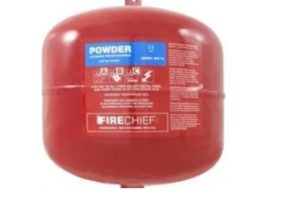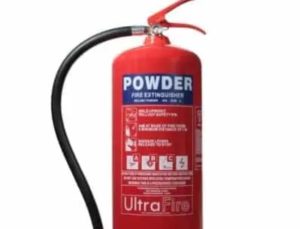
Types of extinguishers used in workplaces vary depending on the class of fire and the material that acts as fuel. Since fires are categorized based on the type of fuel, it also makes sense to class fire extinguishers on the same grounds.
Before buying a fire extinguisher for the workplace, there is a need to ensure it is approved for the workplace. In most cases, you can have different types installed in different areas. Ideally, there are five major classes of fires you can expect in the workplace. Understanding the different types makes it easy to respond to the emergence and use the correct fire extinguisher.
The truth is that a portable fire extinguisher offers a speedy and convenient way of fighting fires at workplaces. These are the main types of fire classes and extinguishers.
Class A
 These fire extinguishers can be used to put off fires caused by the burning of upholstery, furnishings, paper, and wood. In most cases, they contain foam, DCP, and water to smother the fire. This means they remove the heating element of the fire triangle. It is advisable to use foam agents as they separate the oxygen from the fuel and heating element.
These fire extinguishers can be used to put off fires caused by the burning of upholstery, furnishings, paper, and wood. In most cases, they contain foam, DCP, and water to smother the fire. This means they remove the heating element of the fire triangle. It is advisable to use foam agents as they separate the oxygen from the fuel and heating element.
Class B
Fire extinguishers designed for combating class B fires can also be used in the workplace. Ideally, they are effective in putting off fires caused by fuels, paints, lubricating oils, and more. In this case, you can use portable fire extinguishers that contain carbon dioxide.
Class C
These are fires resulting from electrical faults and equipment, such as switches, wiring, and motors. You can use class C fire extinguishers to put off these fires. In most cases, they contain carbon dioxide and DCP.
Class D
 These fires are caused by combustible metals, such as aluminum and magnesium. You can use class D fire extinguishers to put them off. You should note that metals burn at high temperatures. It is not advisable to use carbon dioxide, air, chemicals, or water to put them off. In this case, you should use class D fire extinguishers that contain the dry chemical. They work by isolating oxygen from fuel. You should note use these extinguishers for other classes of fire other than class D.
These fires are caused by combustible metals, such as aluminum and magnesium. You can use class D fire extinguishers to put them off. You should note that metals burn at high temperatures. It is not advisable to use carbon dioxide, air, chemicals, or water to put them off. In this case, you should use class D fire extinguishers that contain the dry chemical. They work by isolating oxygen from fuel. You should note use these extinguishers for other classes of fire other than class D.
Class E
If the above types of fires arise in the workplace in combination with high voltage electricity, then you should use class E fire extinguishers. That is because you should not use extinguishers with conductive agents, as it can result in electrical shocks.…
